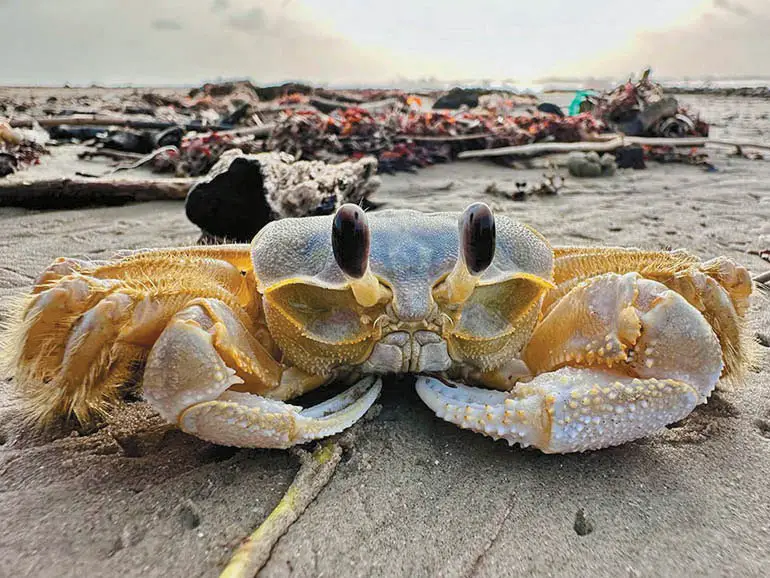Last week, the low morning tides provided perfect beachcombing conditions around midmorning. I discovered a range of treasures, including Atlantic cockle clams, hamburger sea beans and ghost crabs.
Ghost crabs, with their pale, translucent exoskeletons, blend seamlessly into the sandy environment, giving them an almost ghostly appearance as they scurry about. Their coloration, ranging from white to pale gray, helps them avoid predators and remain inconspicuous on the beach. Equipped with long, spindly legs and quick reflexes, they are highly agile, capable of reaching speeds up to 10 miles per hour — ideal for their nocturnal lifestyle.
One of the most intriguing features of ghost crabs is their burrowing behavior. They create complex burrow systems in the sand, extending up to three feet deep. These burrows provide crucial shelter from predators, protection from extreme temperatures and a place to store food. As opportunistic feeders, ghost crabs consume a variety of small mollusks, insects and detritus. Their burrowing also plays an essential role in beach ecosystems by aerating the sand, which benefits other organisms and promotes a healthy beach environment.

A close-up of a ghost crab on the Port Aransas beach. Tunnell says the crabs are important indicators of the health of the beach.
During the breeding season, ghost crabs perform elaborate courtship rituals. Males engage in a complex dance to attract females, raising and waving their claws to showcase their strength and vitality. Once a female selects a mate, they work together to dig a nesting chamber for their eggs, ensuring a safe environment for the next generation.
Despite their small size, ghost crabs are important indicators of beach health. Their presence and behavior can reveal much about the environmental conditions of their sandy habitats. So, the next time you walk along a Texas beach and spot these swift, spectral crabs, remember they are not just fascinating creatures but also crucial to the coastal ecosystem.
Looking ahead, this weekend promises excellent beachcombing with moderate winds and low tides around late morning.

Jace Tunnell is the director of community engagement for the Harte Research Institute for Gulf of Mexico Studies at Texas A&M University-Corpus Christi. His Beachcombing series appears on YouTube and you can follow Jace at harteresearch.org, or Facebook (facebook.com/harteresearch), Instagram (@harteresearch) and X (@HarteResearch).






Loading Comments